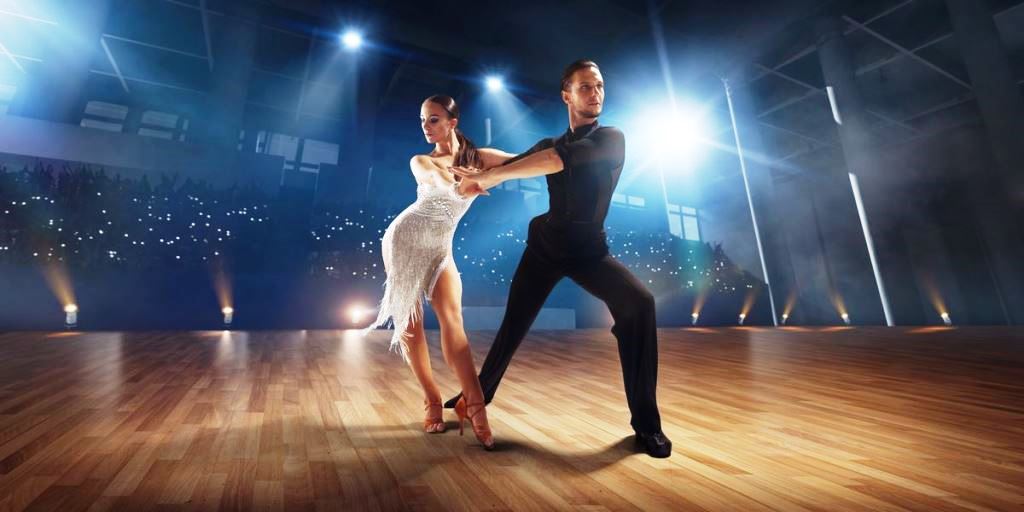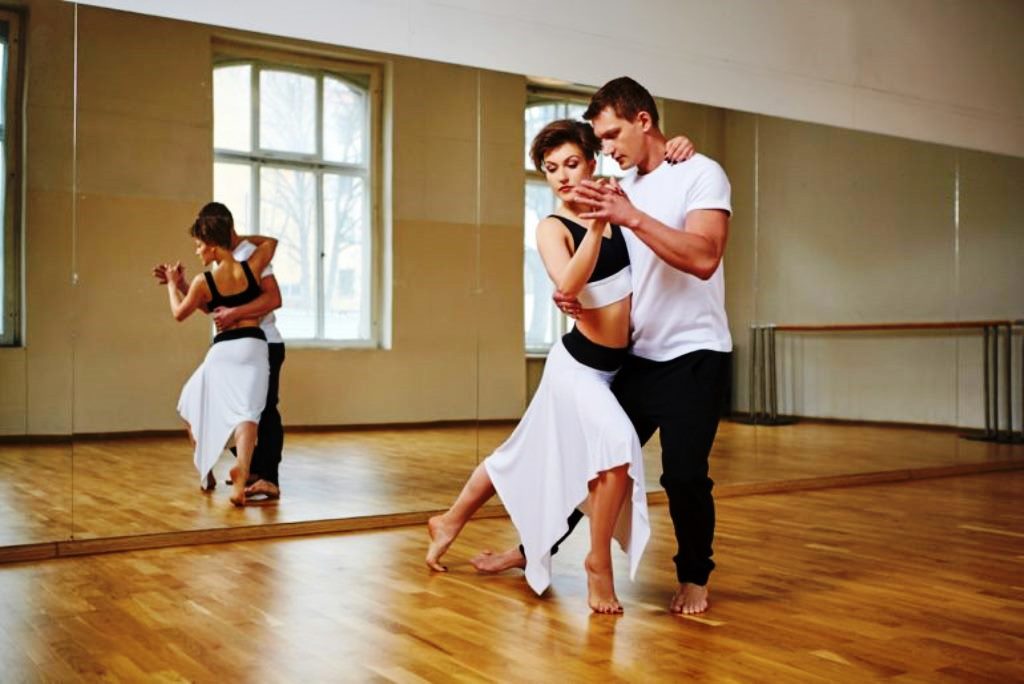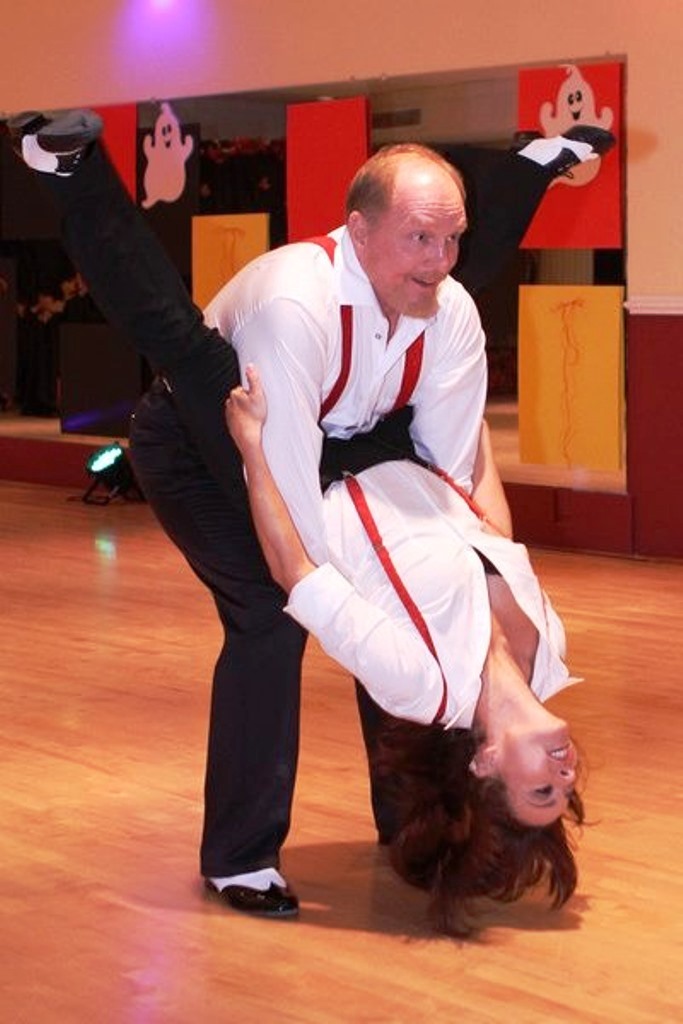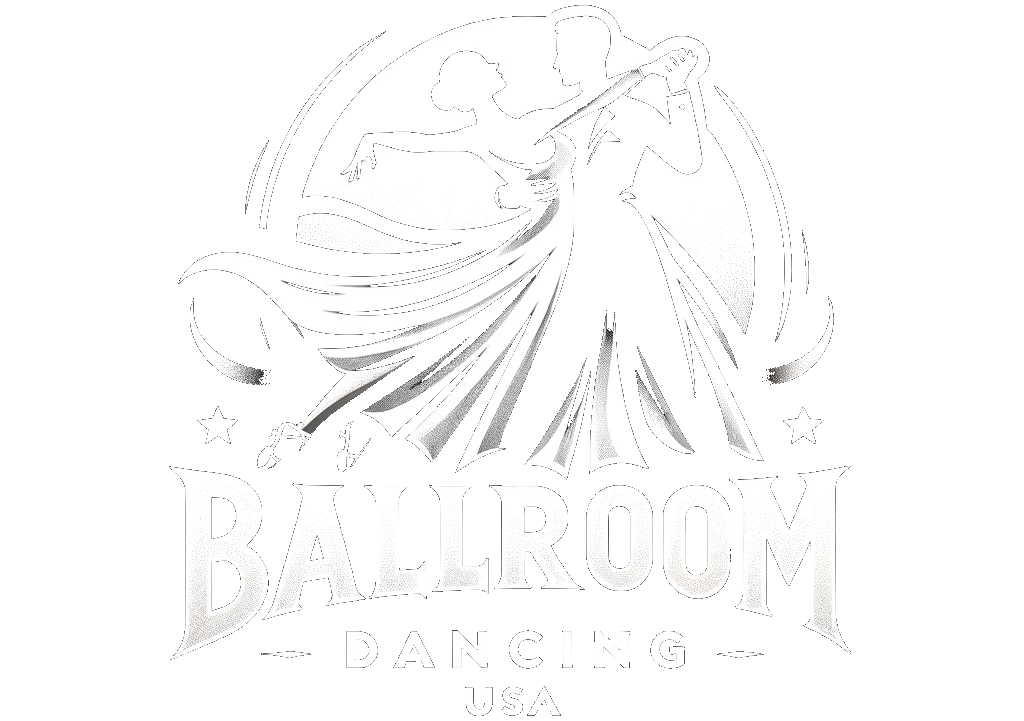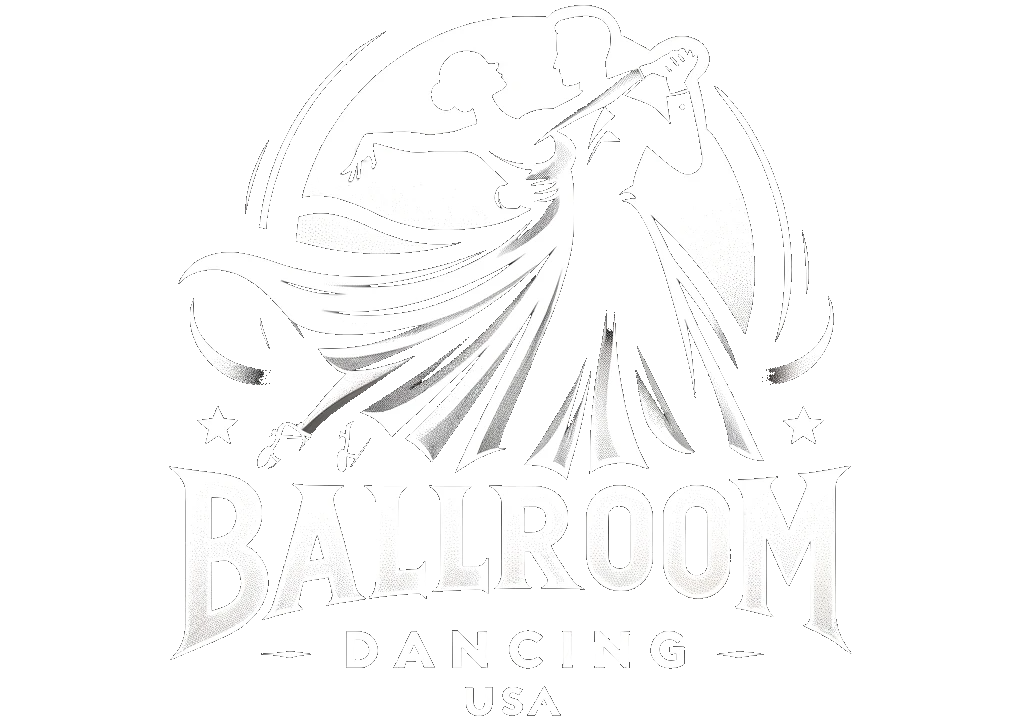
1. Introduction:
Introduction
Ballroom dancing is a sport that requires both physical and mental training. It is a combination of grace, agility, and strength, and the mental training required is just as important as the physical training. Mental training is the key to success in ballroom dancing, and it can help dancers to stay focused and motivated, as well as to develop the skills needed to be successful in the sport. This article will discuss the importance of mental training in ballroom dancing sports, and how it can help dancers reach their full potential.
– Definition of Ballroom Dancing Sports
Definition of Ballroom Dancing Sports
Ballroom dancing sports is a competitive form of partner dance that is characterized by intricate footwork, graceful body movements, and precise timing. It is often referred to as “social” or “performance” dancing, as it is typically performed in a competitive or show setting. Ballroom dancing is a form of art, and dancers strive to create beautiful, expressive works of art.
The competitive aspect of ballroom dancing sports is judged based on a series of criteria, including technique, musicality, and performance. The dancers are judged on their ability to execute the steps of the dance with accuracy and precision, as well as the overall aesthetic of their performance.
Types of Ballroom Dance
Ballroom dancing sports can be divided into two main categories: Latin and Standard. Latin dances include the cha-cha, samba, rumba, and jive. Standard dances include the waltz, foxtrot, tango, and Viennese waltz. Each style has its own unique steps and movements, and each style is judged differently.
– Overview of Mental Training
Overview of Mental Training
Mental training is an important part of any sport, especially ballroom dancing. It is the process of developing mental strength and resilience to help athletes perform to their best ability. Mental training can help athletes stay focused and motivated, manage stress and anxiety, and develop a positive attitude. It can also help them to develop strategies to deal with difficult situations and to maintain a high level of performance. Mental training can also help athletes to develop a sense of control and confidence in their abilities.
Mental training can be done in a variety of ways, such as cognitive-behavioral therapy, mindfulness, and visualization techniques. Cognitive-behavioral therapy helps athletes to identify their negative thoughts and behaviors and learn to replace them with more positive ones. Mindfulness can help athletes to stay in the present moment and focus on their performance. Visualization techniques can help athletes to create mental images of success and visualize themselves achieving their goals.
Mental training can be a powerful tool for ballroom dancers. It can help them to stay focused and motivated, and to develop strategies to deal with challenging situations. It can also help them to develop a positive attitude and a sense of control and confidence in their abilities. Mental training can help ballroom dancers to reach their goals and perform to their best ability.
Mental Training Techniques
Mental training techniques can help ballroom dancers to stay focused and motivated while competing. Some of the most important techniques include:
Visualization
Visualization is a powerful tool that can help dancers to mentally rehearse their routines before they actually perform them. By visualizing the steps and movements of their routine, dancers can better prepare themselves for the actual performance.
Positive Self-Talk
Positive self-talk is a technique that can help dancers to stay positive and motivated. Positive self-talk involves talking to yourself in a positive, encouraging way. This can help to reduce stress and anxiety, and keep dancers focused on their performance.
Goal Setting
Setting goals for yourself can help you to stay focused and motivated on your performance. Goals should be realistic and achievable, and should be broken down into smaller, achievable steps. This will help you to stay motivated and on track for achieving your goals.
Relaxation Techniques
Relaxation techniques such as deep breathing and progressive muscle relaxation can help to reduce stress and anxiety before a performance. These techniques can help dancers to stay calm and focused on their performance.
2. The Benefits of Mental Training in Ballroom Dancing Sports:
The Benefits of Mental Training in Ballroom Dancing Sports
Mental training is an important aspect of ballroom dancing sports that can help dancers achieve their goals. Mental training can help dancers to stay focused, manage stress, and stay motivated. Here are some of the benefits of mental training in ballroom dancing sports:
Improved Performance
Mental training can help dancers to focus on their performance and stay in the moment. This can help them to perform better and achieve their goals. Mental training can also help dancers to stay calm and composed during competitions, which can help them to perform better.
Better Control of Emotions
Mental training can help dancers to better control their emotions. This can help them to stay focused on their performance and not be distracted by their emotions. Mental training can also help dancers to manage their stress levels and stay calm during competitions.
Increased Motivation
Mental training can help dancers to stay motivated and focused on their goals. Mental training can help dancers to stay positive and focused on their performance, even when they are feeling discouraged. Mental training can also help dancers to stay motivated to practice and improve their performance.
– Improved Performance
Improved Performance
Mental training is essential for improving performance in ballroom dancing sports. Mental training helps dancers to focus on the task at hand, build confidence, and stay motivated. By taking the time to mentally prepare for a competition, dancers can improve their performance and increase their chances of success.
Mental training can help dancers to stay focused and block out distractions. It can also help dancers to stay calm and composed during a competition. Mental training can help dancers to stay motivated and push through difficult training sessions. Finally, mental training can help dancers to develop a positive attitude and build confidence in their abilities.
Mental training can also help dancers to break through barriers and push themselves to the next level. Through mental training, dancers can learn to manage their emotions and stay in control of their thoughts and feelings. This can help them to stay focused and push through challenging physical and mental tasks.
Mental training can also help dancers to develop better strategies for competition. By taking the time to mentally prepare, dancers can create a plan for success and develop a positive mindset for competition.
Finally, mental training can help dancers to develop a sense of self-awareness. This can help them to understand their own strengths and weaknesses and use them to their advantage. Mental training can also help dancers to develop self-discipline and stay focused on their goals.
Conclusion
Mental training is an essential part of ballroom dancing sports. It can help dancers to stay focused and motivated, build confidence, and develop better strategies for competition. By taking the time to mentally prepare, dancers can improve their performance and increase their chances of success.
– Increased Focus
Increased Focus
Mental training can help ballroom dancers to increase their focus and concentration on their performance. Through mental training, dancers can learn to stay in the present moment and focus on their movements and the music. This can help them to stay in the moment and avoid distractions, which can lead to improved performance. Mental training can also help dancers to focus on their goals and keep their attention on the task at hand. This can help them to stay motivated and improve their performance. Additionally, mental training can help dancers to develop the mental discipline needed to stay focused and in control during a competition.
– Reduced Stress
Reduced Stress
Mental training can help reduce stress and anxiety in ballroom dancing sports. When dancers are mentally prepared, they can better handle the pressure of competing, which can lead to improved performance. Mental training can also help dancers stay focused and clear-headed during competition.
Mental training can also help dancers manage stress and anxiety in their daily lives. By learning how to better regulate their emotions and take a more mindful approach to their dancing, they can reduce the amount of stress they experience. Mental training can also help dancers identify and address any underlying issues that may be causing them stress.
Finally, mental training can help dancers keep their cool in the face of adversity. By developing their mental skills, dancers can stay composed and collected in high-pressure situations, which can help them better handle the challenges of competing.
Mental Training Techniques
Mental training techniques are essential for ballroom dancers to reach their full potential. Mental training can help dancers to stay focused and motivated, as well as to develop a positive attitude. Mental training techniques can range from visualization, positive self-talk, goal setting, and relaxation techniques.
Visualization
Visualization is a mental training technique that involves imagining a successful performance. For example, a dancer can visualize themselves executing a perfect routine with ease. Through visualization, dancers can gain confidence and focus on their goals.
Positive Self-Talk
Positive self-talk can help dancers to stay focused and motivated. Positive self-talk can involve repeating positive phrases such as “I can do this” or “I am a great dancer.” Positive self-talk can help dancers to stay confident and focused on their goals.
Goal Setting
Goal setting is another important mental training technique for ballroom dancers. Setting goals can help dancers to stay focused and motivated. Goals should be realistic, measurable, and achievable. Setting goals can help dancers to stay on track and reach their full potential.
Relaxation Techniques
Relaxation techniques are also important for ballroom dancers. Relaxation techniques can help dancers to stay calm and focused before a performance. Relaxation techniques can include deep breathing, meditation, and stretching. Relaxation techniques can help dancers to stay focused and perform their best.
3. How to Incorporate Mental Training into Ballroom Dancing Sports:
How to Incorporate Mental Training into Ballroom Dancing Sports
Mental training is an important part of any sport, and ballroom dancing is no exception. Here are some tips for incorporating mental training into your ballroom dancing routine:
1. Visualize Your Performance
Visualization is a powerful tool for athletes of any kind. Before your performance, take some time to close your eyes and imagine yourself dancing perfectly. Visualize yourself executing each step perfectly and confidently. This will help you to stay focused and confident during your performance.
2. Practice Positive Self-Talk
Positive self-talk is essential for any athlete. Before your performance, take a few moments to remind yourself of your strengths and abilities. Remind yourself that you are capable of performing well. This will help to boost your confidence and help you to stay positive during your performance.
3. Focus on the Process, Not the Outcome
It is easy to become fixated on the outcome of your performance, but it is important to remember to focus on the process. Focus on the steps you need to take to get to the end result. This will help you to stay focused and avoid getting overwhelmed by the pressure of the performance.
4. Stay in the Present Moment
It is easy to become distracted by thoughts of the past or the future. When you are performing, be sure to stay in the present moment and focus on the task at hand. This will help you to stay focused and avoid getting overwhelmed by anxiety.
5. Take Time for Relaxation
Relaxation is essential for any athlete. Take some time before your performance to practice breathing exercises and relaxation techniques. This will help you to stay calm and focused during your performance.
– Visualization Techniques
Visualization Techniques
Visualization techniques are a powerful tool for mental training in ballroom dancing sports. Visualization is the process of creating mental images of yourself performing the dance moves and techniques perfectly. Visualizing yourself dancing can help build confidence and increase your focus on the task at hand.
How to Visualize
Visualization involves using all of your senses to create a vivid mental image of yourself performing the dance. Start by finding a comfortable and quiet place to sit and close your eyes. Take a few deep breaths and clear your mind of any distractions. Then, imagine yourself in the ballroom, dancing the moves perfectly. See yourself in the correct posture and position, feel the rhythm and music in your body, and hear the applause of the audience.
Benefits of Visualization
The benefits of visualization techniques include improved focus, increased confidence, and improved technique. Visualizing yourself performing the moves correctly can help you develop a better sense of timing and rhythm. It can also help you learn new steps more quickly and reduce the risk of injury. Additionally, visualizing yourself performing the moves perfectly can help build self-confidence and reduce performance anxiety.
– Relaxation Exercises
Relaxation Exercises
Relaxation exercises are essential for mental training in ballroom dancing sports. Relaxation exercises can help reduce stress and anxiety, improve focus, and increase energy levels. Here are some relaxation exercises that can be used by ballroom dancers:
Deep Breathing
Deep breathing is a simple yet effective relaxation exercise. It can help calm the body and mind, reduce stress and anxiety, and improve concentration. To practice deep breathing, sit or lie in a comfortable position. Close your eyes and take slow, deep breaths in through your nose and out through your mouth. Focus on the breath and the sensation of the air going in and out of your body.
Progressive Muscle Relaxation
Progressive muscle relaxation is a technique that helps reduce tension in the body. To practice progressive muscle relaxation, start by tensing the muscles in your feet and ankles. Hold the tension for a few seconds, then release it and relax. Move up your body, tensing and releasing each muscle group one at a time until you reach the top of your head.
Visualization
Visualization is a technique that can help you to relax and focus on a particular task. To practice visualization, imagine yourself in a peaceful, calming environment. Focus on the sights, sounds, and smells of this environment. Then, imagine yourself performing the task you are preparing for, such as a ballroom dance routine. Visualize yourself performing the routine perfectly and with confidence.
– Pre-Competition Preparation
Pre-Competition Preparation
Mental training is an important part of pre-competition preparation for ballroom dancing sports. It is important to prepare mentally before taking part in a competition. Here are some tips for pre-competition mental training:
Visualization
Visualization is a powerful mental training tool. It involves creating a vivid mental image of yourself performing your routine perfectly. Visualizing the routine can help you to feel more confident and prepared for the competition.
Positive Self Talk
Positive self talk is another important part of mental training. It involves speaking positively to yourself about your ability to perform your routine. This can help to boost your confidence and reduce anxiety.
Goal Setting
Setting goals for yourself is a great way to stay motivated and focused during the competition. It can help to create a sense of purpose and give you something to work towards.
Relaxation Techniques
Relaxation techniques such as deep breathing and progressive muscle relaxation can help to reduce stress and anxiety before a competition. Practicing these techniques regularly can help you to stay calm and focused during the competition.
Mental Training
Mental training is essential for ballroom dancers to reach their full potential. Mental training helps dancers maintain focus, stay motivated, and manage their emotions during competition. It also helps them develop a positive attitude and create a strong mental game plan for success.
Focus
Focus is key in ballroom dancing. It is important to be able to stay focused on the task at hand and not get distracted by the crowd or other competitors. Mental training can help dancers stay focused and block out any negative thoughts or feelings.
Motivation
Motivation is also essential for ballroom dancers. Mental training can help dancers stay motivated and keep pushing themselves to reach their goals. It can also help them stay positive and stay focused on the task at hand.
Managing Emotions
Managing emotions is an important part of ballroom dancing. Mental training can help dancers stay in control of their emotions and stay calm and collected during competition. It can also help them stay positive and not get overwhelmed by the pressure of competition.
4. Conclusion:
Conclusion
Mental training is an essential part of ballroom dancing sports, and can be the difference between success and failure. Mental training can help dancers to stay focused and motivated, as well as improve their performance and reduce stress. Mental training can also help dancers to develop strategies for dealing with difficult situations and to stay positive in the face of adversity. With the right mental training, dancers can become more confident and successful in their dance sport.
Overall, mental training is an important part of ballroom dancing sports and can help dancers to reach their full potential. With the right mental training, dancers can become more confident, motivated and successful.
– Summary of Mental Training in Ballroom Dancing Sports
Summary of Mental Training in Ballroom Dancing Sports
Mental training is an essential part of ballroom dancing sports. It helps dancers to focus their attention, stay motivated, and develop a positive attitude. Mental training can also help dancers to remain calm and confident during competitions. It can also improve their performance by helping them to stay focused on the task at hand and to stay in the present moment.
Mental training can involve visualization, goal setting, self-talk, and relaxation techniques. Visualization can help dancers to imagine themselves performing well and to stay motivated to practice. Goal setting can help dancers to stay focused on their goals and to track their progress. Self-talk can help dancers to stay positive and to stay on track with their practice. Relaxation techniques can help dancers to stay calm and focused during competitions.
Overall, mental training is an important part of ballroom dancing sports and can help dancers to achieve success. With the right mental training, dancers can stay motivated, focused, and positive, which can lead to better performance and greater success.
– Benefits of Incorporating Mental Training
Benefits of Incorporating Mental Training in Ballroom Dancing Sports
Improved Performance
Mental training helps ballroom dancers to become more aware of their performance and to identify areas that need improvement. Through mental training, dancers can learn to focus on the positive aspects of their performance and use that knowledge to improve their technique and overall performance.
Increased Confidence
Mental training can help dancers to develop greater confidence in their abilities. Dancers can learn to focus on the positive aspects of their performance and use that knowledge to increase their confidence. This, in turn, can help dancers to perform better and with greater confidence.
Enhanced Focus
Mental training can help dancers to develop greater focus and concentration. This, in turn, can help them to stay focused on the task at hand and to remain in the moment. This can help dancers to perform better and with more precision.
Decreased Stress
Mental training can help dancers to reduce stress and anxiety. By focusing on the positive aspects of their performance, dancers can learn to relax and stay focused on the task at hand. This can help them to perform better and with less stress.
